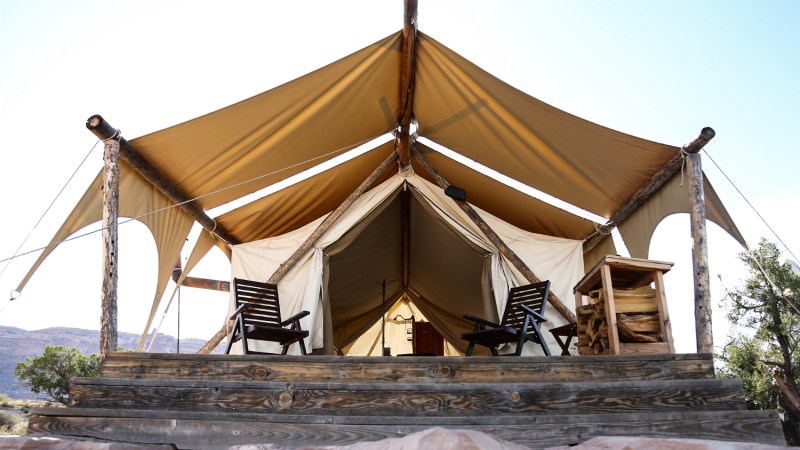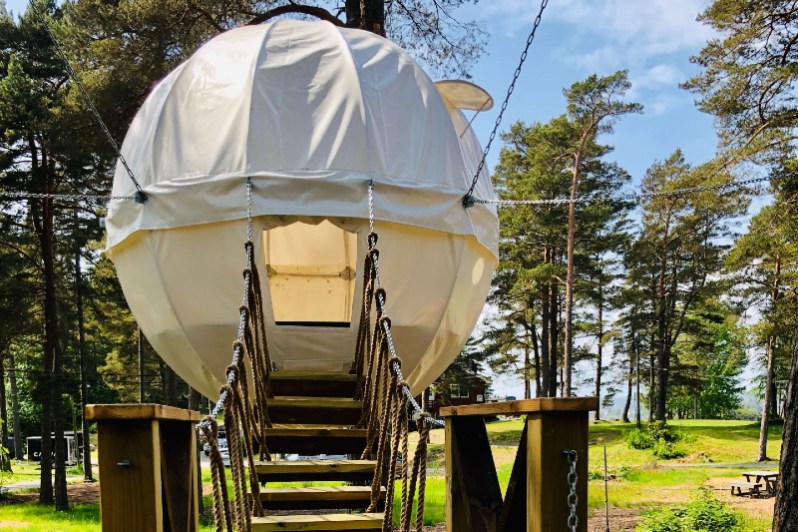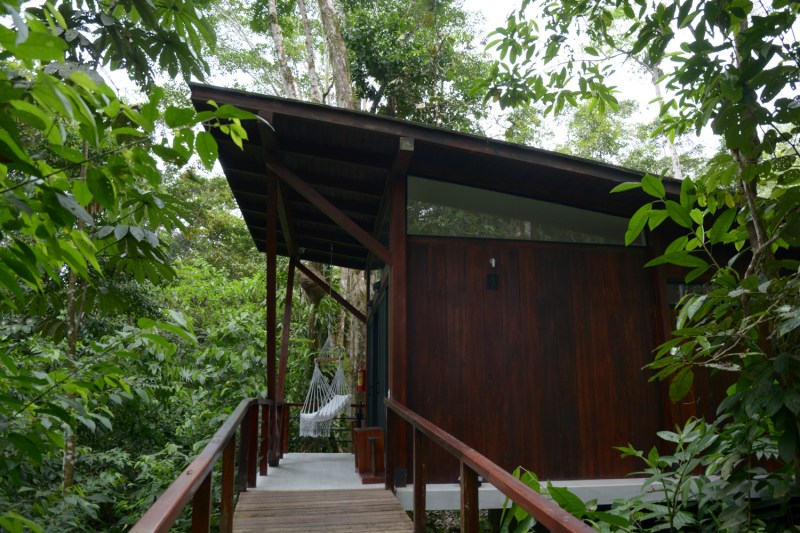
Glamping is where rugged, beautiful nature meets luxury amenities. Think of it as a way to experience untouched parts of this world without having to sacrifice comfort and peace of mind. If your vacation essentials list includes a real mattress, running water, and an actual toilet, glamping is perfect for you. Glamping, a fusion of glamour and camping, allows you to live in nature on your own terms. It may not be as authentic as camping, but hey, it’s a whole lot less stressful!
But the ritzy experience extends well beyond a nice tent and a memory foam mattress. There are a lot of great glamping destinations and experiences to try. Whether it’s sleeping in a treehouse up in a rainforest canopy, sipping and sleeping in an airstream in the middle of a vineyard, or waking up in a yurt to stunning views atop a mountain — all of these things fall under the movement called glamping.
Who Goes Glamping?

Toby O’Rourke, President and CEO of KOA campgrounds, told The Manual, “We’ve been tracking glamping as an emerging travel trend for the past several years as we’ve seen growing demand for different types of glamping experiences.”
Takeaways from his KOA North American Glamping Report suggest that millennials make up the largest group of glampers at 48%, and 42% of travelers who glamp self-identify as non-white. Over 60% of travelers say they glamp because they want services and amenities that aren’t available with traditional camping, while 59% of glampers go with their children, likely because glamping gives families the fun of the outdoors without the hassle of traditional camping.
“Most of my childhood, I’ve done camping as a rugged experience,” adventure travel content creator Justin Walter tells The Manual. “It’s nice to treat yourself to a luxury version through
Types of Glamping

From safari tents to igloos, glamping can come in a variety of shapes and forms. Glamping Hub, for instance, offers 28 different types of experiences to choose from, including tented cabins, yurts, safari tents, treehouses, domes, huts, caves, and igloos. Airstream rentals, trailers, barns, towers, and cottages are also fair game to call glamping experiences if they’re tucked away in nature and off the grid. If you don’t care about the type of glamping “tent” you’re in, pick a destination based on where you want to travel. In fact, some of the most luxurious tent rentals can be found around the world.
Rewards of Glamping
Opting to make one of your trips a glamping experience, as opposed to a hotel, means you’ll likely use less electricity during your stay. You’ll also learn about nature and why it’s important to preserve its wildness, and even though it’s not as bare-bones as camping, you’ll find yourself wanting to disconnect and enjoy just being. Aside from that, you can make the experience unique by bringing in your own glamping gear.
“Spending time outdoors allows me to center myself. It’s a more hands-on life experience, and it reminds me how I am a small person in this universe,” says Walter. “When it comes to travel, I choose the outdoors versus big cities. I want to experience as much as possible that this planet naturally has to offer.”
Each glamping experience is also purposefully unique, and the owners of each site pride themselves on the guest experience. You’ll likely find additional services like guided hikes, canoeing, archery, and fireside cookouts. The glamping tents themselves are often dazzlingly designed, and with attention to detail. It can be like going to an adult summer camp or can offer an excuse to enjoy your solitude.
At the end of the day, follow Walter’s lead: “Put your fears aside and realize that going out of your comfort zone is a great experience, and the outdoors is our greatest teacher.”
Editors' Recommendations
- Yosemite National Park is getting a new glamping site with the luxuries you want
- 5 reasons you should buy your Ikon Pass for next ski season now
- 3 great reasons you should never buy a used mountain bike
- If you like skiing or snowboarding, you need to update your iPhone immediately – here’s why
- Headed to Aspen for skiing or snowboarding? Here are the 5 hotels you should stay at


